Yamaha SA503 TVL Troy Van Leeuwen Electric Guitar
 | |||
| LIST PRICE: $1,499.99 MANUFACTURER: Yamaha PRO: Versatile tone circuit provides Gibson and Strat tones CON: Not available without Bigsby | |||
Troy Van Leeuwen may not exactly be a household name, even to readers of this magazine. For the record, he’s the former guitarist with Failure and A Perfect Circle, and currently Josh Homme’s sixstring sidekick in Queens of the Stone Age. But he’s certainly one of the more original guitarists to surface over the last decade or so. While Yamaha’s choice of Van Leeuwen’s name to grace a signature model does not make obvious sense from the traditional “star worship” marketing approach, Van Leeuwen did help Yamaha develop a fresh, offbeat instrument that stands out from the crowd as much as its namesake does.
Features
At first glance, the Yamaha SA503 TVL Troy Van Leeuwen model resembles a Gibson thinline electric from the late Fifties, such as an ES-335 or ES-355. Its symmetrical double-cutaway body shape is similar to that of a Gibson ES- 335, and the “top hat” control knobs, dot fingerboard inlays and polished aluminum Bigsby tremolo tailpiece are all features that are reminiscent of vintage thinline Gibsons as well. However, the SA503 TVL also features three single-coil soapbar pickups—a configuration inspired by Gibson’s beastly ES-5 Switchmaster models produced between 1949 and 1956 (with its controversial and outrageous “All” pickup setting).
The SA503 TVL breaks from the vintage Gibson model by featuring a set neck made from carved maple, a stiffer wood that provides brighter, more punchy tone than the mahogany used on classic Fifties Gibsons. The top, back and sides are maple as well, and the body and rosewood fingerboard are bound with cream-colored, single-layer binding that gives the guitar a burnished, old-guitar glow. The only concession to modern design is the guitar’s distinctive split f holes, which span a larger surface on the guitar’s top than traditional f-holes.
Controls include a master tone control and separate volume controls for each of the three soapbar pickups. But the coolest and most useful feature is the SA503’s “all-access” pickup selector system, which consists of two three-position toggle switches. This deceptively simple but versatile circuit provides access to all seven possible pickup combinations, and because the switches are located close to each other it’s easy to select any desired combination with a flick of two fingers. One toggle switch controls the neck and bridge pickups in a traditional manner (bridge/both/neck) while the other switch turns the middle pickup on or off or disengages everything but the middle pickup.
Sound
Thanks to the “all-access” system and its beefy soapbar pickups, the SA503 delivers a surprisingly vast palette of guitar tones. P90-style pickups could very well be the ultimate pickups for hard rock rhythm guitar, providing more weight than Strat or Tele pickups and better definition and cut than large humbuckers, and they’re a great complement to resonant warmth of the SA503’s semihollow body and the brightness of its maple construction. With all the different combinations available from its three pickups, the SA503 can sound like the fattest Strat you’ve ever heard but it can also serve up tasty vintage Gibson flavors, too.
This guitar absolutely screams through a vintage tweed Fender (I used a ’57 Deluxe for testing), yielding ballsy, bluesy tones that would have made Stevie Ray envious. It’s even more snarling and aggressive though a high-gain amp like a modern Marshall, Mesa-Boogie or Krank, pumping out thick, sustaining solo tones and slashing power chords. Despite having a semi-hollow body, the guitar does not suffer from uncontrollable feedback howls, and it’s relatively easy to harness feedback for more creative purposes.
The Bottom Line
Even if you’re not familiar with Troy Van Leeuwen’s stellar playing, you should check out this guitar if you want a versatile studio or stage ax that drips with cool vintage vibe and tones. If you love the sound of a Strat but prefer the feel of a Gibson (and don’t want to sacrifice Gibson tones either), the SA503 TVL with its 24 3/4–inch scale, 22- fret neck and traditional thinline design coupled with its outstanding three-pickup “all-access” circuit will certainly satisfy your needs. This guitar looks, sounds and feels great, and it’s a surprisingly good value compared to other pro-quality thinline models on the market.











 Bixonic recently released the Bixonic Expandora EXP-2000R, a reissue of the earlier EXP-2000.
Bixonic recently released the Bixonic Expandora EXP-2000R, a reissue of the earlier EXP-2000.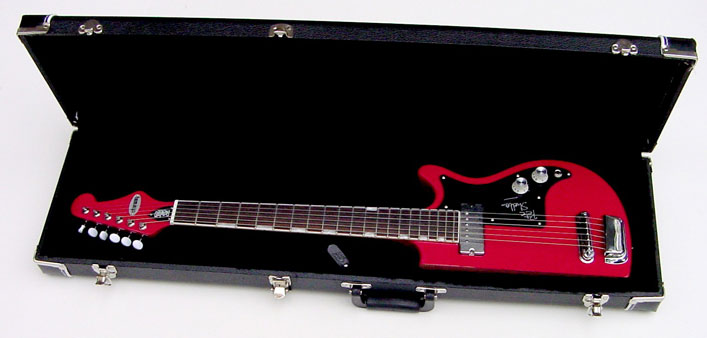



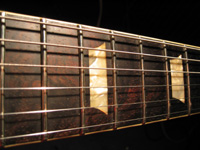 Johan Gustavsson has been building and repairing guitars for twenty years. He has gathered a lot of knowledge of how vintage guitars are made.
Johan Gustavsson has been building and repairing guitars for twenty years. He has gathered a lot of knowledge of how vintage guitars are made.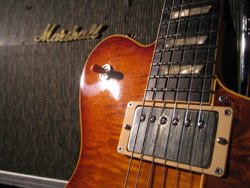 Plugged in we tested the BM through a Germino Lead 55 and an old Marshall JTM 50. Both heads were connected to a vintage Marshall cab with G12H 30 watters. Amplified the BM sounds equally as good as unplugged.
Plugged in we tested the BM through a Germino Lead 55 and an old Marshall JTM 50. Both heads were connected to a vintage Marshall cab with G12H 30 watters. Amplified the BM sounds equally as good as unplugged.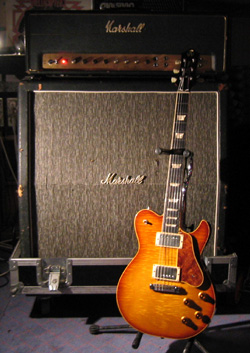 The Gustavsson Bluesmaster Custom 59 is , as you probably have gathered by now, a guitar that impressed us a lot. Even if it's a new guitar, it feels and looks like an old guitar. The overall feel and quality of this instrument is if highest class, it's clear that Johan Gustafsson makes guitars of outstanding quality with great attention to details without loosing that vintage feel.To us the BM should be considered in the same company as the top of the line custom shop Gibsons and boutique builders like Baker or Mc Inturff. It's great that we here in remote and cold Sweden have such a gifted guitar builder. Way to go Johan!!!
The Gustavsson Bluesmaster Custom 59 is , as you probably have gathered by now, a guitar that impressed us a lot. Even if it's a new guitar, it feels and looks like an old guitar. The overall feel and quality of this instrument is if highest class, it's clear that Johan Gustafsson makes guitars of outstanding quality with great attention to details without loosing that vintage feel.To us the BM should be considered in the same company as the top of the line custom shop Gibsons and boutique builders like Baker or Mc Inturff. It's great that we here in remote and cold Sweden have such a gifted guitar builder. Way to go Johan!!!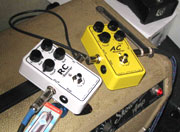 While I have quite a few overdrives I where attracted by the video clips of the AC-booster. The sound those pro players got with that pedal was amazing. The overdrives I have all color the sound, which actually can be a good thing, the Landgraff can give Marshall grind to a Fender and the Klon has a nice fat midrange boost when overdriving. The RC boost also seemed attractive, the ability the push the just a little bit more is something the Klon does well but I looked for a smaller pedal that would be easier to transport for jams etc.
While I have quite a few overdrives I where attracted by the video clips of the AC-booster. The sound those pro players got with that pedal was amazing. The overdrives I have all color the sound, which actually can be a good thing, the Landgraff can give Marshall grind to a Fender and the Klon has a nice fat midrange boost when overdriving. The RC boost also seemed attractive, the ability the push the just a little bit more is something the Klon does well but I looked for a smaller pedal that would be easier to transport for jams etc.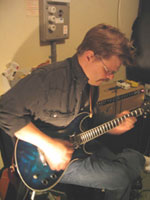 The AC/RC sound.
The AC/RC sound.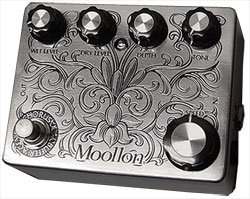

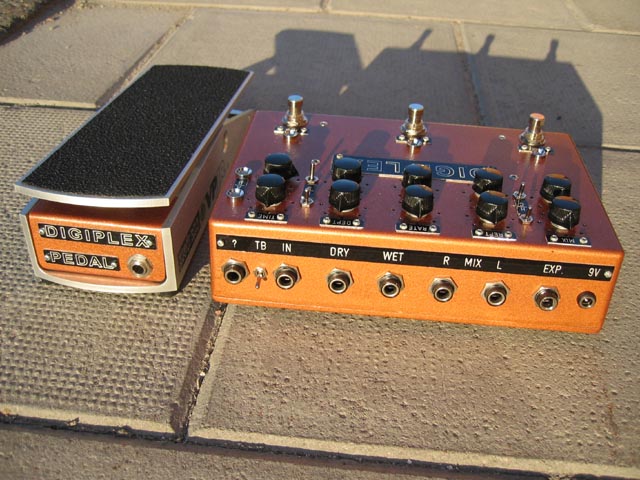
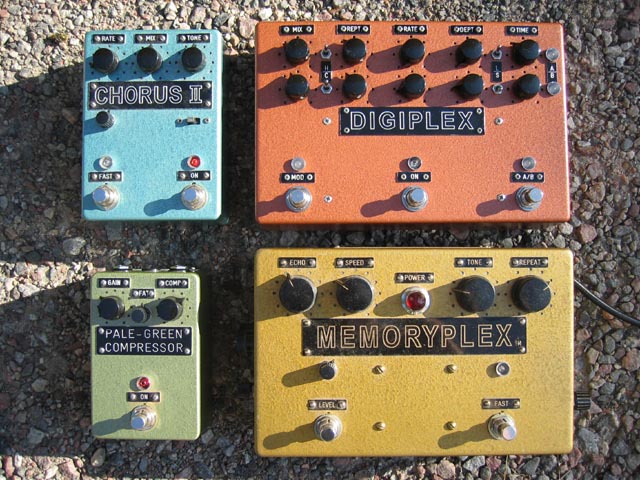 This has been a team effort by Kjell and his tech wizard friend Agne Mattsson. They have put a lot of time and energy into building The Digiplex. When I asked Kjell if he’d be willing to build some more pedals, his reply was: “ This was more of an isolated experiment, but if someone have a Chandler echo that they’re willing to sacrifice, wait a long time and spend a lot of money, then perhaps”.
This has been a team effort by Kjell and his tech wizard friend Agne Mattsson. They have put a lot of time and energy into building The Digiplex. When I asked Kjell if he’d be willing to build some more pedals, his reply was: “ This was more of an isolated experiment, but if someone have a Chandler echo that they’re willing to sacrifice, wait a long time and spend a lot of money, then perhaps”.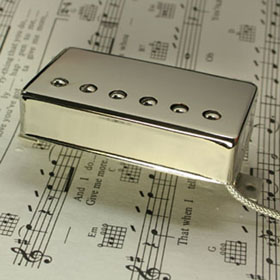 When Seth Lover invented the “Humbucker” he probably had no idea that his pickups would be the industry standard 50 years later, and that the original pickups from the 50’s would command big bucks on the vintage market. When it comes to electric guitar pickups that are considered”holy grails”, the so called PAF’s (Patent Applied For) wins by a large margin. These pickups where standard equipment on Gibson electric guitars and was used between 1957 and 1962 on various models. This era is considered the golden age of electric guitar building, which ads to the mystique surrounding the PAF pickup. In recent years there have been a number of boutique pickup builders that have made their version of the PAF. Although Gibson is manufacturing the Classic 57 and the Burstbucker pickups, many feel that they aren’t as true to the originals as would be desired.
When Seth Lover invented the “Humbucker” he probably had no idea that his pickups would be the industry standard 50 years later, and that the original pickups from the 50’s would command big bucks on the vintage market. When it comes to electric guitar pickups that are considered”holy grails”, the so called PAF’s (Patent Applied For) wins by a large margin. These pickups where standard equipment on Gibson electric guitars and was used between 1957 and 1962 on various models. This era is considered the golden age of electric guitar building, which ads to the mystique surrounding the PAF pickup. In recent years there have been a number of boutique pickup builders that have made their version of the PAF. Although Gibson is manufacturing the Classic 57 and the Burstbucker pickups, many feel that they aren’t as true to the originals as would be desired.






